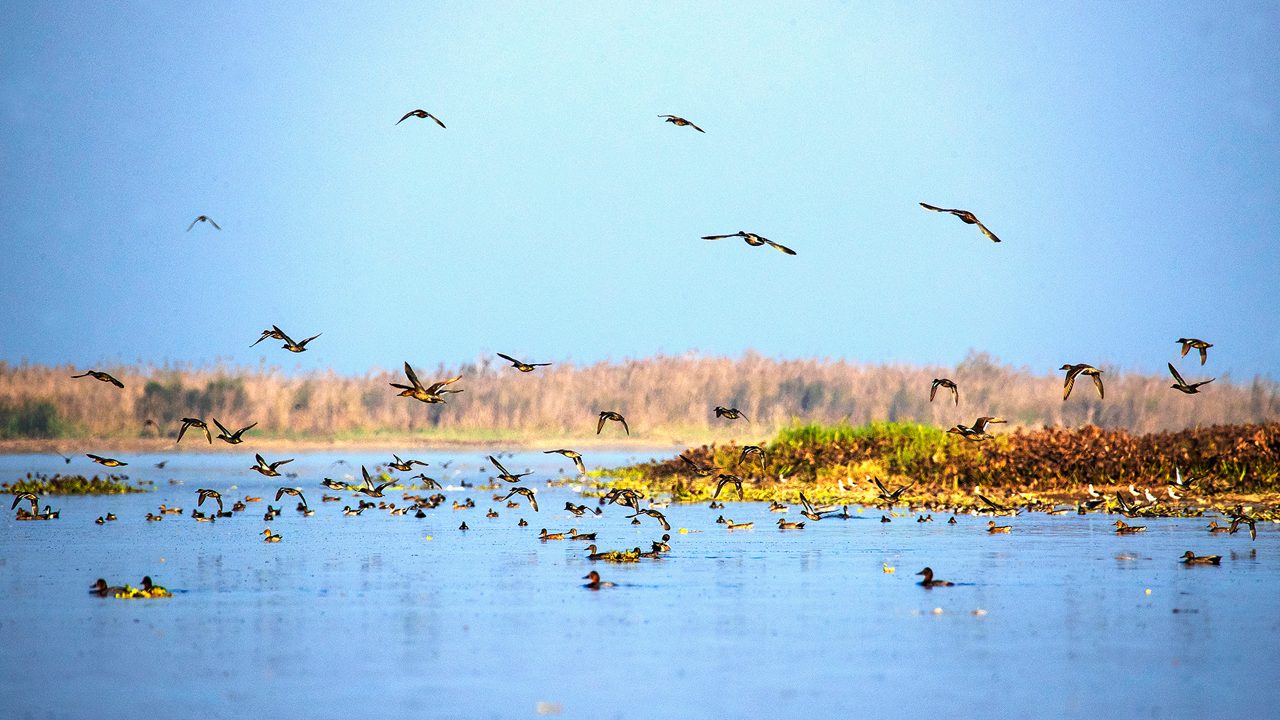Kashmir’s Wetlands: The Hidden Paradise We’re Losing Fast!

The wetlands of Kashmir are often referred to as the “lungs” of the region, vital for maintaining the delicate balance of nature in the Himalayan landscape. These water-rich ecosystems, brimming with life and beauty, are among the most captivating yet underappreciated treasures of India. However, rapid urbanisation, pollution, and neglect are threatening to turn this paradise into a wasteland.
Why Kashmir’s Wetlands Matter
Kashmir’s wetlands are not just water bodies; they are thriving ecosystems that play an essential role in environmental health, biodiversity, and human well-being. Key wetlands in the region include Hokersar, Wular Lake, Dal Lake, Haigam, and Shalbugh. These wetlands are interconnected and provide numerous ecological services:
1. Sanctuaries for Wildlife
Kashmir’s wetlands host an incredible variety of flora and fauna. During the harsh winters, they provide refuge to migratory birds from Siberia, Central Asia, and Europe. Species such as the bar-headed goose, northern shoveller, and Eurasian teal flock here, making the wetlands a birdwatcher’s paradise.
2. Natural Water Regulators
Wetlands act like giant sponges, absorbing excess rainwater and reducing the risk of floods. During dry periods, they release stored water, ensuring a steady supply.
3. Economic Lifelines
For centuries, communities living around the wetlands have relied on them for fishing, agriculture, and the harvesting of aquatic plants. The cultivation of nadru (lotus stems) in Wular Lake and Dal Lake is a significant source of income for local farmers.
4. Climate and Carbon Regulators
By trapping carbon dioxide, wetlands help combat climate change. They also stabilise temperatures in the region, maintaining a balance between seasons.
The Hidden Paradise Under Threat
Despite their importance, Kashmir’s wetlands are shrinking at an alarming rate. Studies indicate that over the past few decades, nearly half of the wetland areas in Kashmir have been lost. The reasons are both human and natural, but the consequences are devastating.
1. Urban Encroachments
The expansion of cities like Srinagar has led to the draining and filling of wetlands for construction. Hokersar Wetland, once sprawling over 13.75 square kilometres, has seen its boundaries significantly reduced due to illegal encroachments.
2. Pollution Crisis
Untreated sewage, plastic waste, and agricultural run-off are choking Kashmir’s wetlands. Dal Lake, a crown jewel of the region, is battling severe pollution, threatening its aquatic life and scenic appeal.
3. Climate Change
Erratic rainfall, rising temperatures, and melting glaciers are disrupting the natural hydrology of the wetlands. These changes are altering water levels, impacting both biodiversity and the livelihoods of people dependent on these ecosystems.
4. Unregulated Exploitation
Overfishing, sand extraction, and illegal poaching of migratory birds add to the woes. Such activities disturb the ecological balance and degrade the wetlands further.
The Alarming Impact of Wetland Loss
The destruction of wetlands in Kashmir has far-reaching consequences:
- Increased Flooding: Without wetlands to absorb excess rainwater, the region becomes more prone to devastating floods, as seen in the 2014 Kashmir floods.
- Biodiversity Decline: Loss of habitat means fewer migratory birds, fish species, and aquatic plants. This has ripple effects on the entire food chain.
- Economic Hardships: Communities dependent on fishing, tourism, and agriculture suffer as resources deplete.
- Worsening Climate Effects: Without wetlands to sequester carbon, the region faces intensified climate change impacts.
What Can Be Done?
Reversing the damage to Kashmir’s wetlands requires urgent and collective action. Here are some key solutions:
1. Strengthen Laws and Policies
Strict enforcement of environmental regulations can prevent illegal encroachments and ensure proper waste management. Designating more wetlands as protected areas is essential.
2. Restore Degraded Wetlands
Rehabilitation projects, such as those undertaken for Wular Lake, can help revive wetlands by removing silt, restoring natural water channels, and replanting aquatic vegetation.
3. Promote Eco-Tourism
Sustainable tourism can generate income while raising awareness about the importance of wetlands. Birdwatching tours and nature walks could help strike a balance between conservation and livelihood.
4. Community Involvement
Engaging local communities in conservation efforts ensures that they benefit from the sustainable use of resources. Education campaigns can also foster a sense of responsibility among residents.
5. Tackle Pollution
Setting up sewage treatment plants and promoting eco-friendly agricultural practices can significantly reduce the pollution burden on wetlands.
Conclusion
Kashmir’s wetlands are more than just water bodies; they are lifelines for the region’s ecology, economy, and culture. Losing them would not only mean the extinction of unique ecosystems but also a direct threat to the survival of millions of people. While the challenges are immense, there is hope if immediate and collective action is taken. By recognising the value of these hidden paradises and working towards their restoration, we can ensure that future generations inherit a thriving Kashmir, brimming with life and natural beauty.
You Might Also Like:
Pahalgam Hotel – Heritage Luxury in the Heart of Kashmir
Constitution Day in India: Celebrating the Soul of Democracy
Sakeena Masood Itoo visits Government Medical College (GMC) Anantnag, Reviews its Functioning
Nizamuddin Bhat Confident Centre Will Honour Promises on J&K Statehood Restoration





